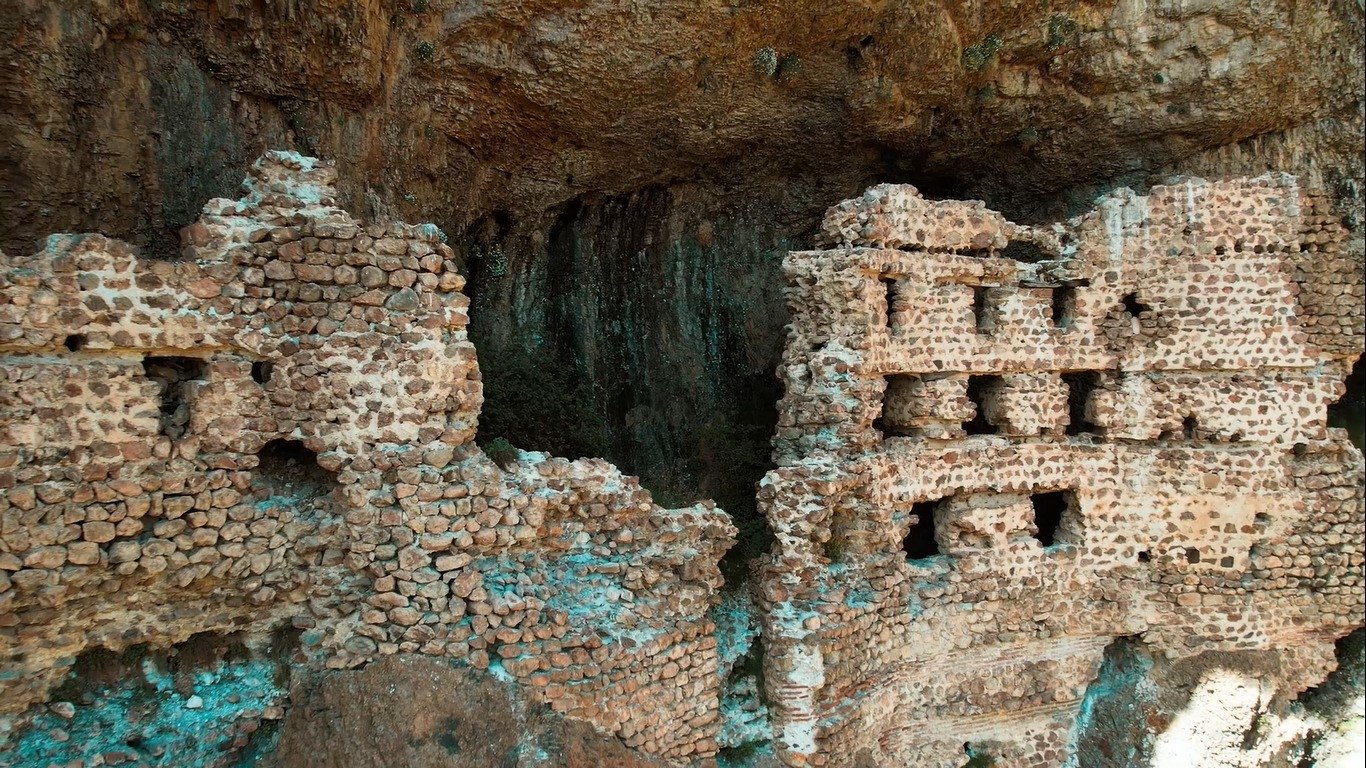© Turkuvaz Haberleşme ve Yayıncılık 2024
The Alicin Geosite, positioned at the summit of a canyon nearly 1,000 meters (almost 3,300 feet) high in Ankara's Kızılcahamam, shares striking architectural similarities with Trabzon's historic Sümela Monastery. It's more plausible that these caves, believed to have been created by Cin Ali, known as a bandit, in the second half of the 19th century in the vicinity, were built for security purposes during the Roman period.
The monastery, formed by closing off a cavity within conglomerates, stands about 15 meters above ground. Its distant appearance is reminiscent of the iconic Sümela in Trabzon, it's dubbed "Mini Sümela."
Yet, the site remains veiled in mystery due to the limited available information. Believed to have an even older history than the globally recognized Sümela Monastery, the Alicin Geosite in the vicinity of the capital awaits tourism development, ready to reveal its rich historical heritage to the world.

One of the undiscovered historical treasures of Anatolia, the Alicin Geosite, is also facing the threat of extinction. This monastery-like site, built on a steep slope inside the canyon, lacks clear information about its past. However, the monastery, reachable only by climbing, attracts the attention of everyone passing through the canyon.
According to historians, the monastery served as a defensive line. Because, unlike other monasteries, there are no religious frescoes depicted walls inside the monastery and no rooms divided into sections such as sleeping quarters for monks, dining areas, chapels and communal spaces for work and prayer.
